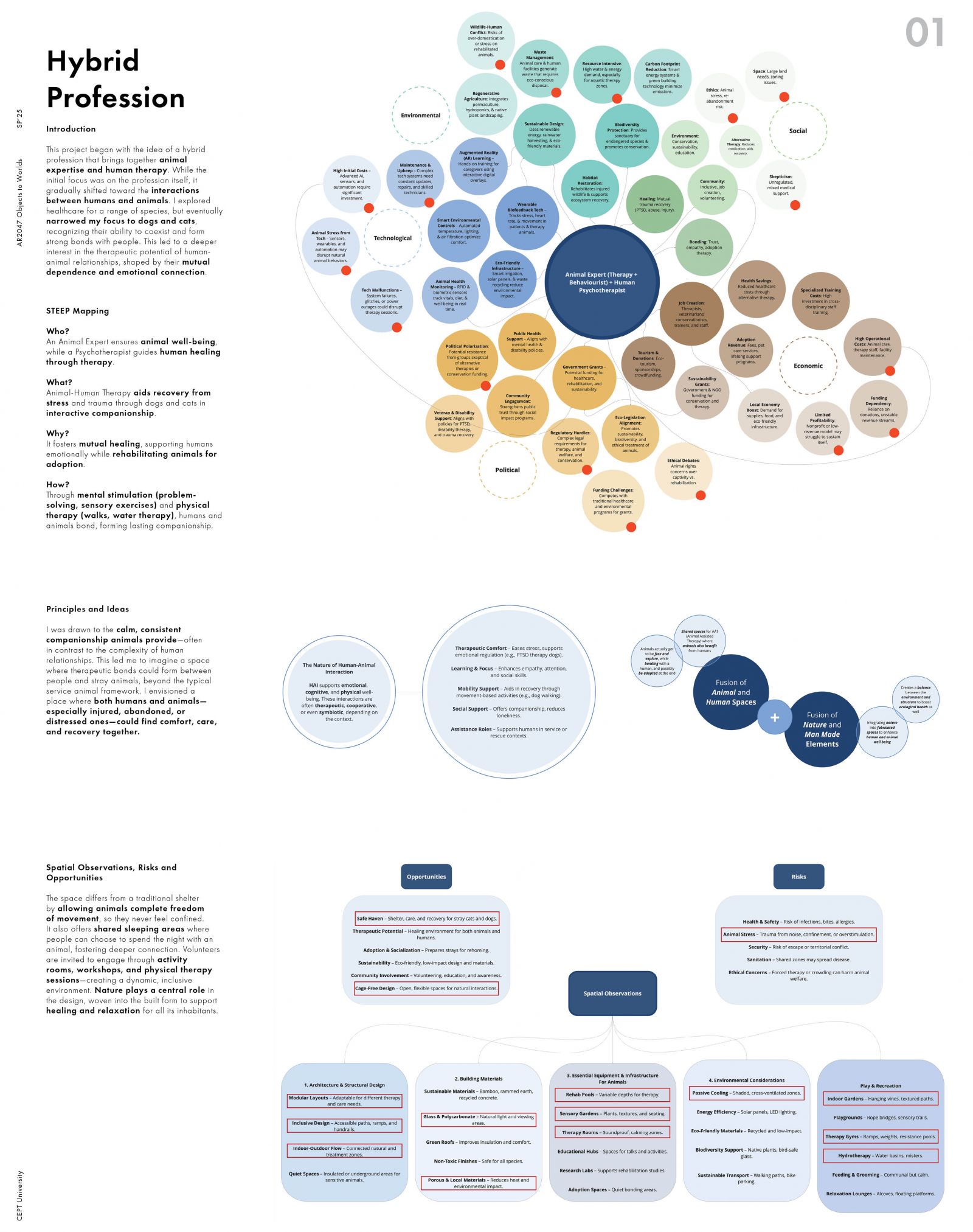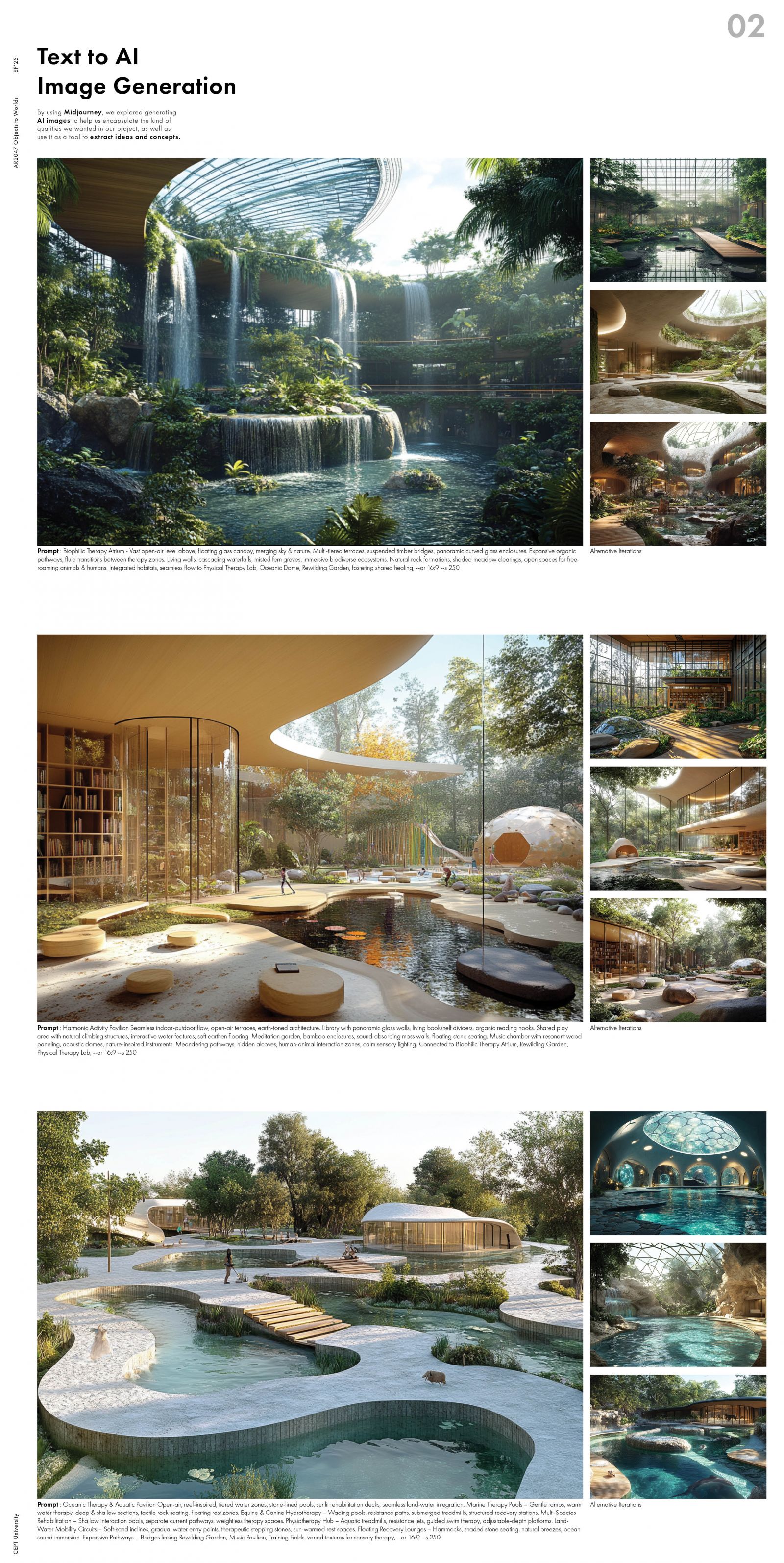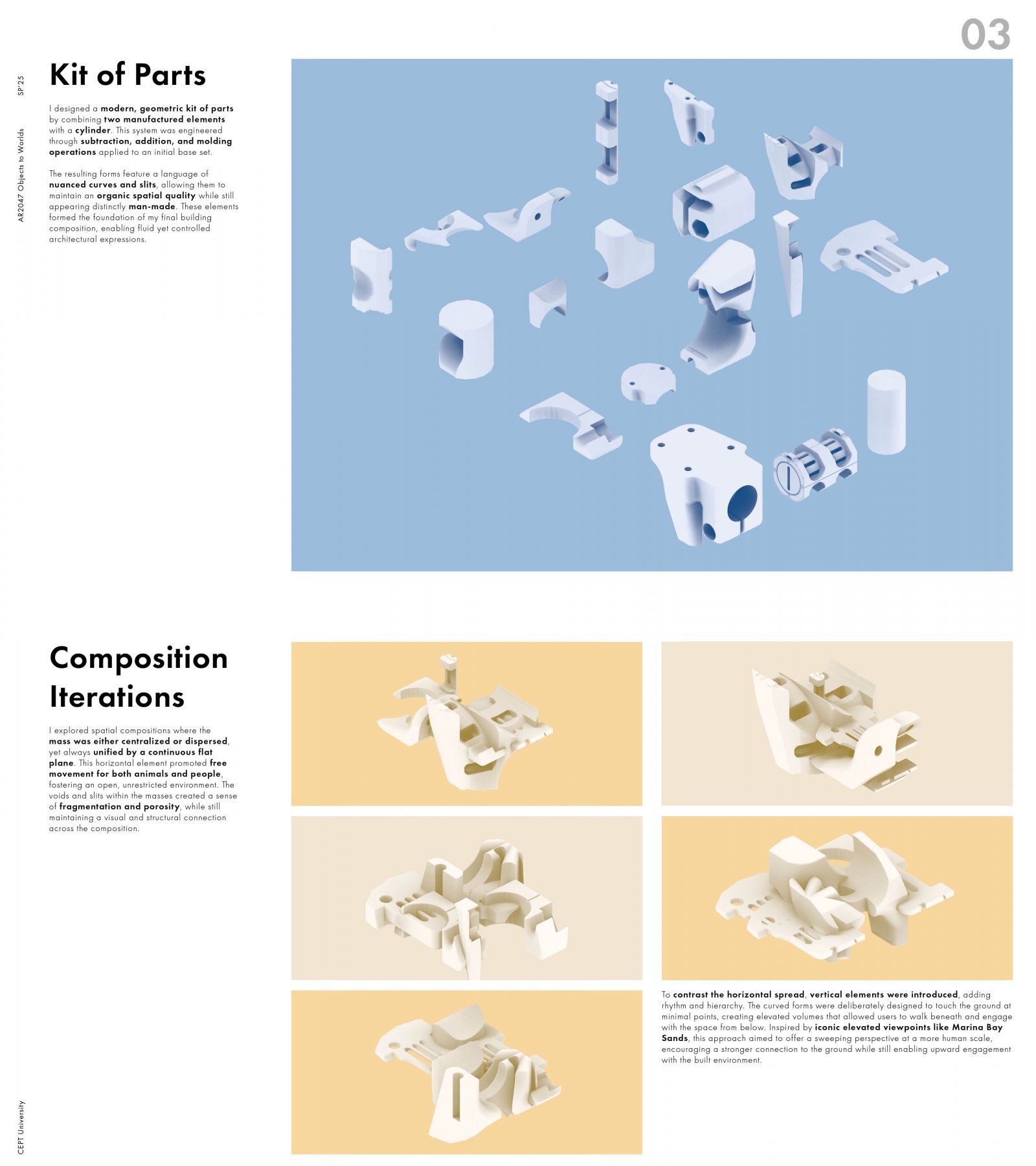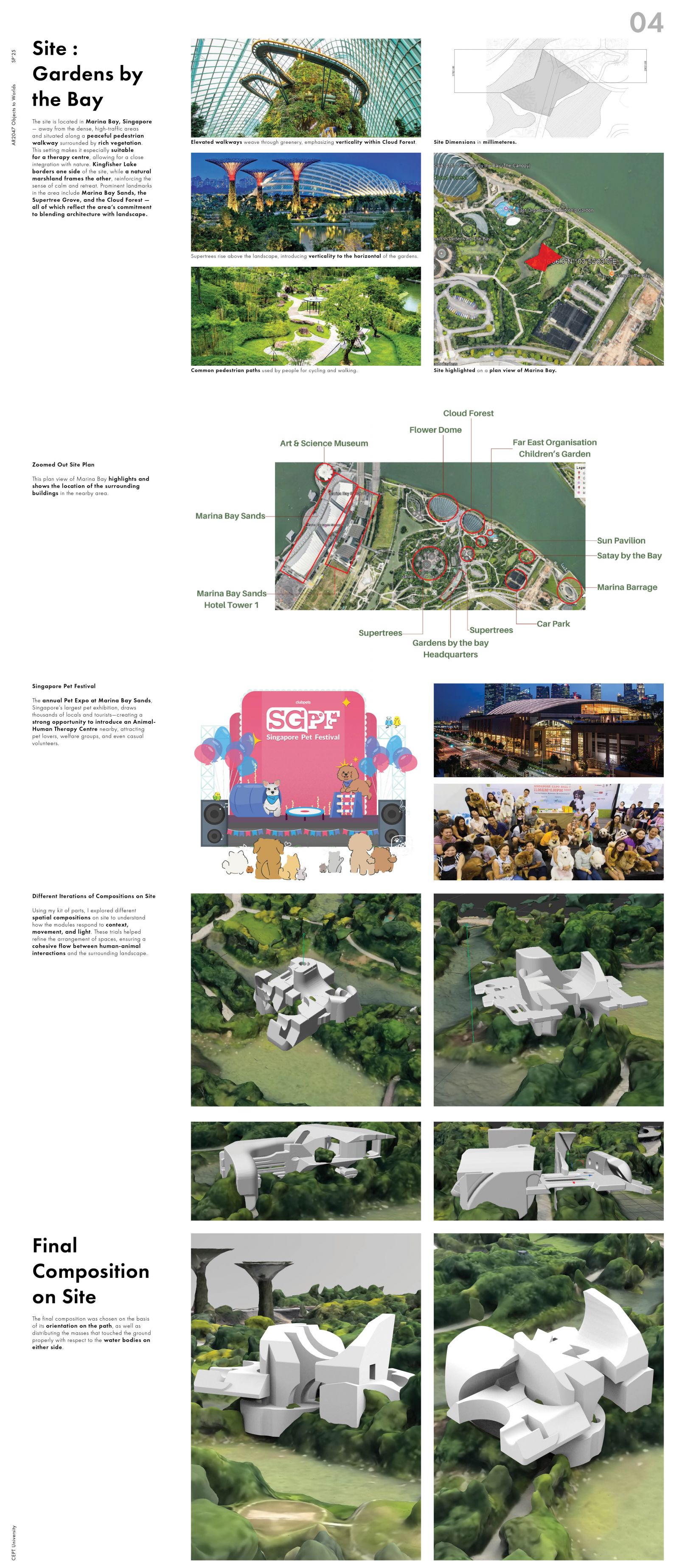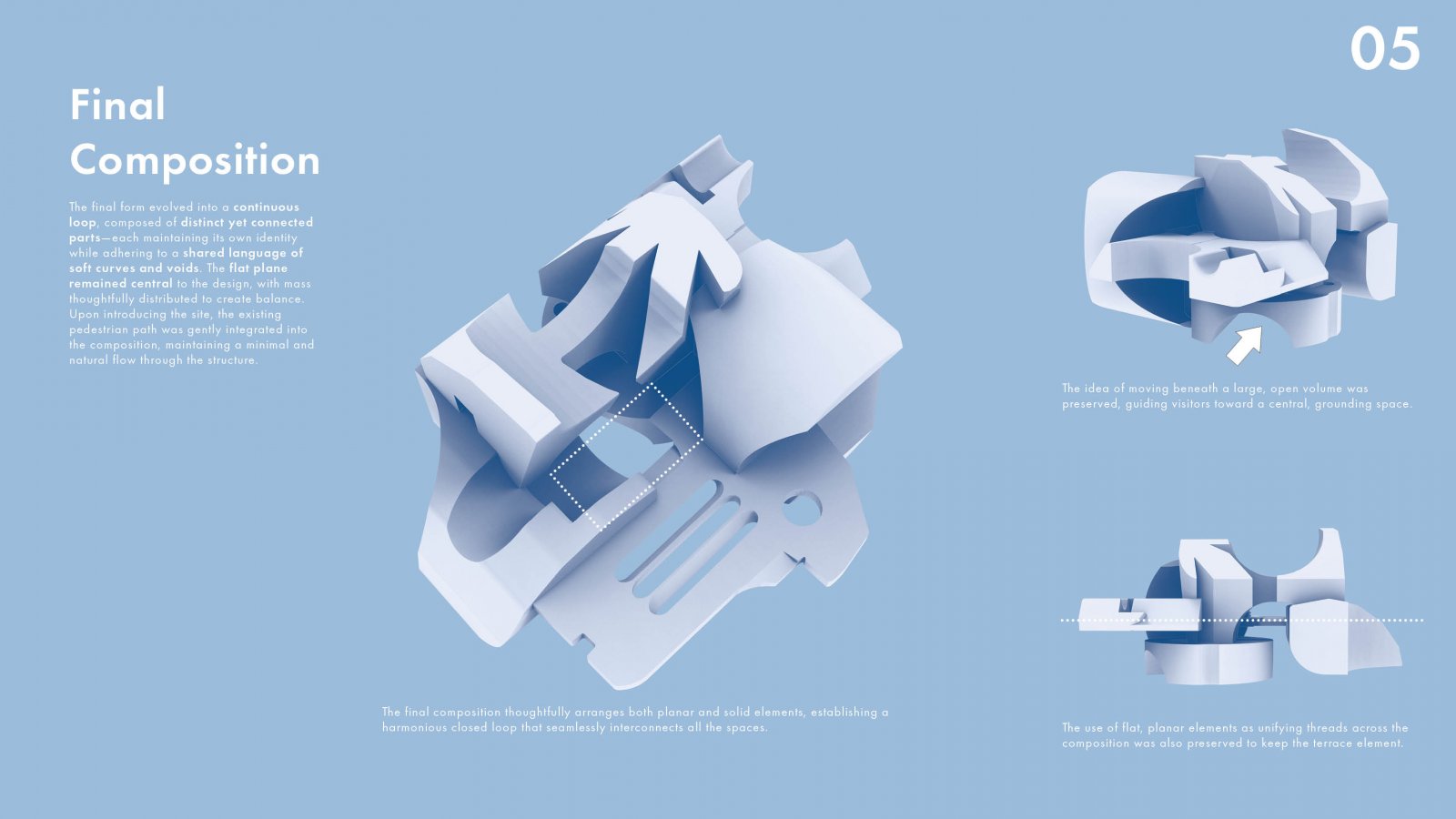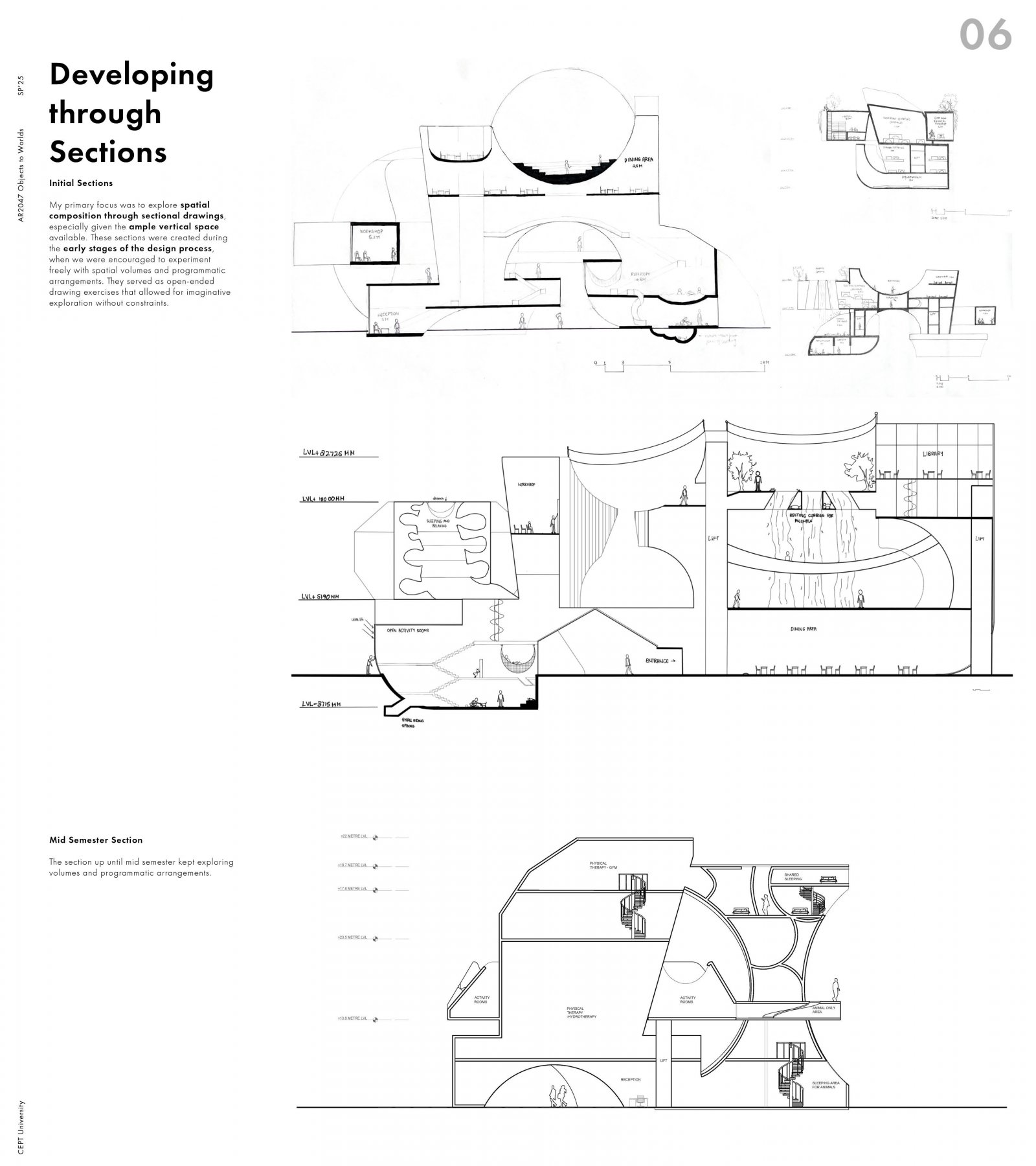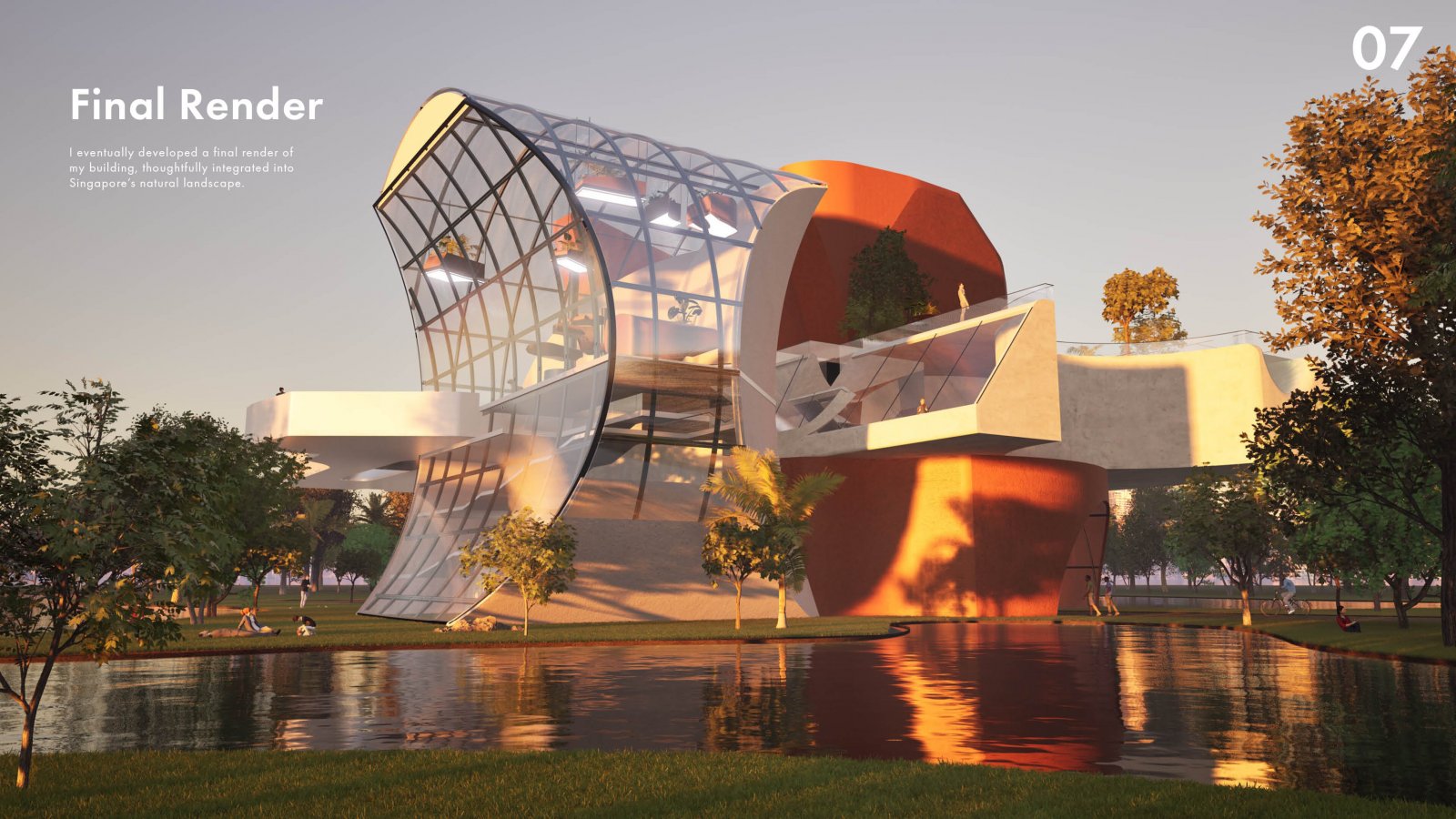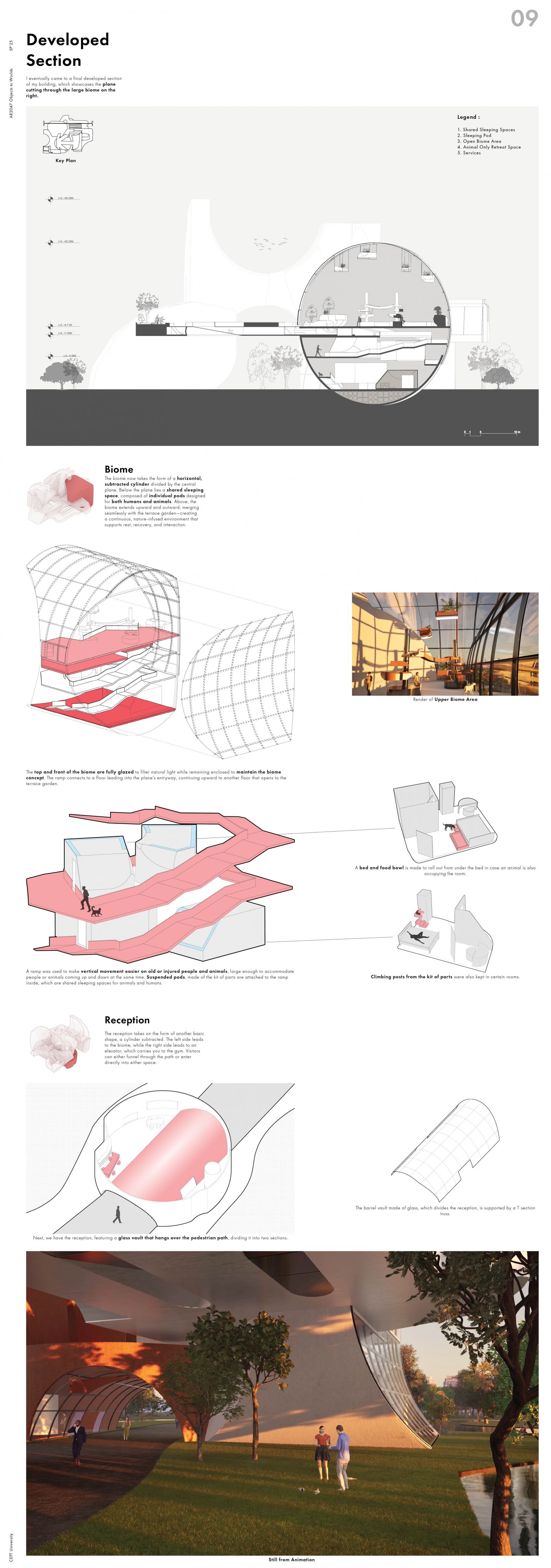Your browser is out-of-date!
For a richer surfing experience on our website, please update your browser. Update my browser now!
For a richer surfing experience on our website, please update your browser. Update my browser now!
Located along the pedestrian edge of Marina Bay, is a therapy and rehabilitation centre designed for stray, abandoned, and injured cats and dogs, in tandem with humans seeking quiet companionship and healing. The centre explores the architectural potential of shared shelter—where recovery is not isolated, but mutual. Through a series of interlinked pods, open ramps, and planted terraces, the project softens the boundaries between species, offering spaces to eat, sleep, and play together. Its spatial language prioritizes pause, light, and touch, with minimal partitions and porous edges that blend into the landscape. Designed using a modular kit of parts, the project adapts sensitively to the site while remaining reconfigurable. The annual Pet Expo at Marina Bay Sands highlights the urgent relevance of such a centre—inviting both local and visiting communities to engage with a new model of interspecies care, empathy, and cohabitation.
